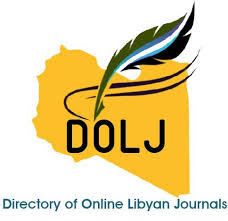Mapping of Bacterial Landscape of Neonatal Septicaemia, Tripoli-Libya
DOI:
https://doi.org/10.54361/LJMR.19.1.05Keywords:
Newborn, Septicemia, Bacteria, Gram Negative, EOS, LOS and LibyaAbstract
Purpose: The objective of this study is to investigate the distribution and types of bacteria causing septicemia in newborns at Aljala Hospital in Tripoli, aiming to enhance understanding for better prevention and treatment of neonatal sepsis
Method: This retrospective study gathered data from newborns with sepsis at Aljala Hospital in Tripoli, Libya, from 2014 to 2023, It focused on various factors, including the type of delivery, the causes of sepsis, and the types of microorganisms involved in the infections.
Results The findings reveal a concerning predominance of Gram-negative bacteria, which constitute 63% of the identified pathogens, compared to 37% of Gram-positive bacteria. Notably, Staphylococcus aureus and Escherichia coli emerged as the most prevalent bacterial species associated with neonatal septicemia.
Conclusion:
This research underscores the urgent need for enhanced infection control measures and targeted therapeutic strategies to mitigate the impact of neonatal sepsis in such vulnerable populations.
Downloads
References
Gebrehiwot A, Lakew W, Moges F, Moges B, Anagaw B, Yismaw G, et al. Bacterial profile and drug susceptibility pattern of neonatal sepsis in Gondar University Hospital, Gondar northwest Ethiopia. Der Pharmacia Lettre. 2012;4(6):1811-6.
Wynn JL, Wong HR, Shanley TP, Bizzarro MJ, Saiman L, Polin RA. Time for a neonatal–specific consensus definition for sepsis. Pediatric critical care medicine: a journal of the Society of Critical Care Medicine and the World Federation of Pediatric Intensive and Critical Care Societies. 2014;15(6):523.
Medhat H, Khashana A. Incidence of neonatal infection in South Sinai, Egypt. International Journal of Infection. 2017;4(1).
Lawn JE, Blencowe H, Oza S, You D, Lee AC, Waiswa P, et al. Every Newborn: progress, priorities, and potential beyond survival. Lancet. 2014;384(9938):189-205.
King A, Juszczak E. U. Kingdom et al.,“Treatment of neonatal sepsis with intravenous immune globulin,”. The New England Journal of Medicine. 2011;365(13):1201-11.
El Jadba AEHN, El Yazji MS. Neonatal septicemia in Gaza city hospitals. Pak J Med Sci. 2009;25(2):226-31.
Hannan A, Qamar MU, Usman M, Waheed KAI, Rauf K. Multidrug resistant microorganisms causing neonatal septicemia: In a tertiary care hospital Lahore, Pakistan. Afr J Microbiol Res. 2013;7(19):1896-902.
Bassetti M, Righi E, Carnelutti A, Graziano E, Russo AJEroa-it. Multidrug-resistant Klebsiella pneumoniae: challenges for treatment, prevention and infection control. 2018;16(10):749-61.
Al Bakoush FB, Azab AE, Yahya RAJSARJAMS. Neonatal Sepsis: Insight into Incidence, Classification, Risk Factors, Causative Organisms, Pathophysiology, Prognosis, Clinical Manifestations, Complications, Systemic Examination, and Treatment. 2023;5(6):136-57.
Dinagde TO, Simbo TS, Gebaba EMJEJoHD. Bacterial Neonatal Sepsis and Associated Risk Factors among Neonates: The Case of Adama Hospital Medical College. 2023;37(1).
Strunk T, Molloy EJ, Mishra A, Bhutta ZAJTL. Neonatal bacterial sepsis. 2024;404(10449):277-93.
Gao K, Fu J, Guan X, Zhu S, Zeng L, Xu X, et al. Incidence, bacterial profiles, and antimicrobial resistance of culture-proven neonatal sepsis in south China. 2019:3797-805.
Geleta D, Abebe G, Tilahun T, Ahmed H, Workneh N, Beyene GJBID. Prevalence and pathogen profiles of bacteremia in neonates hospitalized for clinical Sepsis in Ethiopia: a systematic review and meta-analysis. 2024;24(1):1424.
Muhammad Z, Ahmed A, Hayat U, Wazir MS, Waqas HJJoAMCA. Neonatal sepsis: causative bacteria and their resistance to antibiotics. 2010;22(4):33-6.
Lakbar I, Einav S, Lalevée N, Martin-Loeches I, Pastene B, Leone MJM. Interactions between gender and sepsis—implications for the future. 2023;11(3):746.
Hafidh Y, Hidayah D, Sunyataningkamto SJPI. Factors affecting mortality of neonatal sepsis in Moewardi Hospital, Surakarta. 2007;47(2):74-7.
17. SOMAN M, GREEN B, DALING JJAjoe. Risk factors for early neonatal sepsis. 1985;121(5):712-9.
Rafi MA, Miah MMZ, Wadood MA, Hossain MGJPo. Risk factors and etiology of neonatal sepsis after hospital delivery: A case-control study in a tertiary care hospital of Rajshahi, Bangladesh. 2020;15(11):e0242275.
Sands K, Spiller OB, Thomson K, Portal EA, Iregbu KC, Walsh TRJI, et al. Early-onset neonatal sepsis in low-and middle-income countries: current challenges and future opportunities. 2022:933-46.
Migamba SM, Kisaakye E, Komakech A, Nakanwagi M, Nakamya P, Mutumba R, et al. Trends and spatial distribution of neonatal sepsis, Uganda, 2016–2020. 2023;23(1):770.
Zelellw DA, Dessie G, Worku Mengesha E, Balew Shiferaw M, Mela Merhaba M, Emishaw SJBri. A Systemic Review and Meta‐analysis of the Leading Pathogens Causing Neonatal Sepsis in Developing Countries. 2021;2021(1):6626983.
Jajoo M, Kapoor K, Garg L, Manchanda V, Mittal SJJoCN. To study the incidence and risk factors of early onset neonatal sepsis in an out born neonatal intensive care unit of India. 2015;4(2):91-5.
Milton R, Gillespie D, Dyer C, Taiyari K, Carvalho MJ, Thomson K, et al. Neonatal sepsis and mortality in low-income and middle-income countries from a facility-based birth cohort: an international multisite prospective observational study. 2022;10(5):e661-e72.
Downloads
Published
Issue
Section
License
Copyright (c) 2025 Attiya M. Alatery, Salah B. mohamed, wejdan Allied , shahd sholak , fyrouz F. Algabry (Author)

This work is licensed under a Creative Commons Attribution-NonCommercial-NoDerivatives 4.0 International License.
Open Access Policy
Libyan journal of medical Research (LJMR).is an open journal, therefore there are no fees required for downloading any publication from the journal website by authors, readers, and institution.
The journal applies the license of CC BY (a Creative Commons Attribution 4.0 International license). This license allows authors to keep ownership f the copyright of their papers. But this license permits any user to download , print out, extract, reuse, archive, and distribute the article, so long as appropriate credit is given to the authors and the source of the work.
The license ensures that the article will be available as widely as possible and that the article can be included in any scientific archive.
Editorial Policy
The publication of an article in a peer reviewed journal is an essential model for Libyan journal of medical Research (LJMR). It is necessary to agree upon standards of expected ethical behavior for all parties involved in the act of publishing: the author, the journal editorial, the peer reviewer and the publisher.
Any manuscript or substantial parts of it, submitted to the journal must not be under consideration by any other journal. In general, the manuscript should not have already been published in any journal or other citable form, although it may have been deposited on a preprint server. Authors are required to ensure that no material submitted as part of a manuscript infringes existing copyrights, or the rights of a third party.
Authorship Policy
The manuscript authorship should be limited to those who have made a significant contribution and intellectual input to the research submitted to the journal, including design, performance, interpretation of the reported study, and writing the manuscript. All those who have made significant contributions should be listed as co-authors.
Others who have participated in certain substantive aspects of the manuscript but without intellectual input should only be recognized in the acknowledgements section of the manuscript. Also, one of the authors should be selected as the corresponding author to communicate with the journal and approve the final version of the manuscript for publication in the LJMR.
Peer-review Policy
- All the manuscripts submitted to LJMR will be subjected to the double-blinded peer-review process;
- The manuscript will be reviewed by two suitable experts in the respective subject area.
- Reports of all the reviewers will be considered while deciding on acceptance/revision or rejection of a manuscript.
- Editor-In-Chief will make the final decision, based on the reviewer’s comments.
- Editor-In-Chief can ask one or more advisory board members for their suggestions upon a manuscript, before making the final decision.
- Associate editor and review editors provide administrative support to maintain the integrity of the peer-review process.
- In case, authors challenge the editor’s negative decision with suitable arguments, the manuscript can be sent to one more reviewer and the final decision will be made based upon his recommendations.












